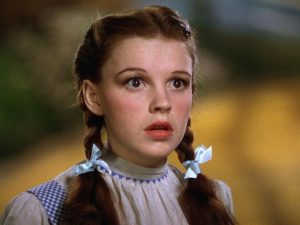After the detonation of the atomic bomb in Hiroshima and Nagasaki, the whole world stood in awe. According to The University of California: Los Angeles, it was the first attack of its nature on behalf of the United States, and its detonation led to the death of approximately 150,000 in Hiroshima and 75,000 in Nagasaki. This devastating attack on civilians did not only garner Japan’s surrender in World War II, but also planted a seed of fear into the world. Some can debate it was the first time that the United States was seen as a force to be reckoned with, while others perceive it as one of the most horrific and inhumane acts committed by the U.S. These points-of-view are crucial to the perception of nuclear weapons in America decades later. During the 60s, at the height of the Cold War and Cuban Missile Crisis, the United States found itself in a frightening situation regarding nuclear weapons. While the conflict never culminates, the fear of being victims to a nuclear fallout was permeated into the minds of young Americans. This fear did not gradually dissolve and has been recently heightened as a result of relations between the United States and North Korea.
The Washington Post reports that tensions between the United States and North Korea have subsided and have been in talks of an agreement regarding nuclear weapons and their usage, but nevertheless the looming fear of being thrust into a nuclear war is real to many. What does this mean for the United States? Fear of being subjected to a nuclear war has been a ubiquitous facet of the lives of many, and the development of nuclear arms has not ceased. According to the Washington Post, Abraham Denmark, a former Asia official at the Pentagon, warns: “I’d caution against too much optimism because we’ve been down this road too many times before”. It also reports that residents should possess a small emergency kit with items such as: sturdy shoes, petty cash, and three days’ worth of food and water, among other things. This, however, is in the unlikely event of an attack by North Korea. Therefore, should the United States really be worried about the possibility of a nuclear attack? It is hard to say and is the cause for speculation.
Sources:
https://www.washingtonpost.com/world/asia_pacific/north-korea-offers-talks-with-united-states-on-curbing-nuclear-program/2018/03/06/91a2b770-2134-11e8-94da-ebf9d112159c_story.html?noredirect=on&utm_term=.5a6bfb44dbfa
https://www.washingtonpost.com/news/politics/wp/2017/12/14/how-to-prepare-for-a-nuclear-attack/?utm_term=.ac16cc7bcc0e
http://www.aasc.ucla.edu/cab/200708230009.html
http://historyconflicts.com/atomic-bombing-hiroshima-nagasaki/
